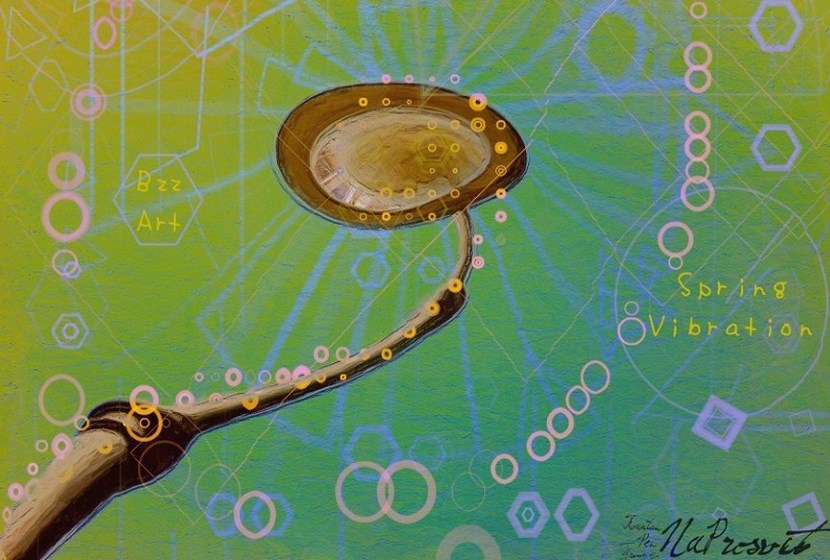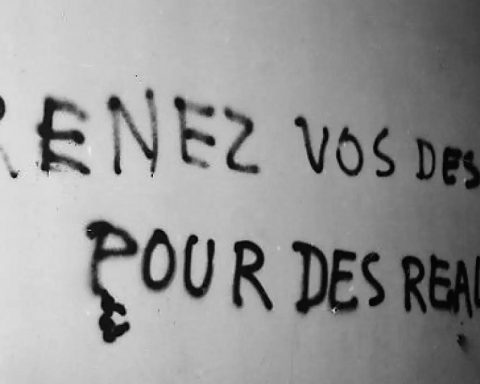If it challenges us, what does science fiction have to say? Like painting, is it "pure emotion" or "accumulation of meaning", or both? In what way does this modern imagination allow us to translate reality (in the sense of "pure emotion" or "accumulation of meanings")? Lacan and not Benveniste) beyond its simple representation? Does his unbridled, remote, distanced imagination overturn man's relationship with the natural world, contrary to realistic, down-to-earth plastic imagery? Finally, can we really speak of a SF hermeneutics, of a "figure", of something profound, ancient, to be decoded in this modern imaginary?
What's the psychic?
 Imagery must be taken for what it is: technical and commercial devices for the obsessive fixation of the world, stocks recording facts and gestures, some agreed upon and in circulation, chosen and promoted by modern society and its conscience.
Imagery must be taken for what it is: technical and commercial devices for the obsessive fixation of the world, stocks recording facts and gestures, some agreed upon and in circulation, chosen and promoted by modern society and its conscience.
By imagery, I mean the flow of (modern) phototechnical images and not the paintings belonging to a different political economy of culture; but the photographed paintings are at the border of this economy and belong to it; it is in this that we speak of market devices referring to the merchandise of the capitalist modes of production and the revolutions of the cultural and creative industries. Let us add that as technical devices and logos (gathering of thought), the imageries are flat robots; each image (of the system of imageries) is a flat robot and all the questions addressed to the imageries are addressed to the robots through them, and vice versa.
Yesterday, iconodulators of the Byzantine Empire worshipped images/icons (iconodoulie was also a trade) and iconoclasts broke them; tomorrow, Franck Herbert predicted a Butlerian Jihad (Dune1965-1985) or a complete revolt against machines, which was resumed after Asimov (Robot Dreams(1986), the writers, directors and producers of The Matrix (1999) and, most importantly, dAnimatrix (2003). And today, " Alone on Mars "by Ridley Scott.
Only the imagery of photography and cinema - the virtual imagery of video games and digital cinema has another regime, something Hegelian that goes beyond the photographic (world) - does not make a copy of this society; it is the enunciation and the very statement of the real world that is exposed through them.
In the plastic image of reality, of the world-reality, a painting or a drawing, the world-reality remains distinct from itself, there remains a distance, an interval (there is added value: overcoming the enunciation: we are in worlds that are not in the world we see). This distance, this enunciation, seems to have disappeared in century-old photography and cinema. (Certainly, the genre, editing and slow motion ensure this function of derealization, of "refusal of the real" or of the real-world).
Above all, in the plastic image of reality, the world was denied, not in its appearance, but in its very essence, denied as (real) nature; for man added man. Imagery in general (the moment of "modern technology": the arrest and, at the same time, seizure and dispossession of the world by flat-bottomed robots) thus reverses man's relationship with the world, which was summed up in the classical vision, and creates the possibility of a new tyrannical domination of the world over man, hence the notion of the Situationists' Spectacle. (Guy Debord, in his manifesto La Société du Spectacle (1967) summarizes Thesis 34: " The spectacle is capital to such a degree of accumulation that it becomes image. "
The system of imagery overturns man's relationship with the world because it exposes him to us live or in presence.
Imagery, the form and deployment of the Logos (like robots), stores knowledge, encloses it in technology and the present; there are no more losses, no more gaps between the world and man (The Spectacle would therefore be the negation of the gap between the world and man, a "live-live" world, as they used to say on French television, what is also called "presentification" of the world).
However, SF imagery (exploratory, fabulatory, anticipatory) reverses this reversal (critique of critique): SF imagery returns to the cultural negation of the world, the affirmation of consciousness (creative); it returns to addition. (They go elsewhere to talk about here; they do as if they were off-center and believe in it (Montesquieu!); they are models of reality (symbols) and not the real world, the real).
" This time becomes the place of maximum investment of the utopia which thus moves towards history. ", writes B. Baczko (Social imaginaries, 1984), thus echoing the new anthropological spirit implying mythological primacy over history (Durand). (If this hypothesis is interesting, it should be linked, like Lucien Goldman, to a materialist Marxian analysis).
Thus, after utopia and SF literature, imagery or "flattened robots" are the rational form of the imaginary, its continuation by other means. (In other words, the "anthropological continuity" of the Logos or path met with "capitalist discontinuity" or technical modernity, to say nothing more).
What's the message?
 " Science enchants the details and the whole (but) only a fabulous story can tell it, better, sing it.r" explains Michel Serres in a book of interviews. « This enchantment can only be expressed through a story.... "(Jules Verne, 2003)
" Science enchants the details and the whole (but) only a fabulous story can tell it, better, sing it.r" explains Michel Serres in a book of interviews. « This enchantment can only be expressed through a story.... "(Jules Verne, 2003)
This story, both contradictory and complementary to the "disenchantment of the world" by science, Gilbert Durand (but one could gloss over from the College of Sociology or Adorno and Horkheimer) shows that its function, a fantastic function, is to fight against mortal destiny, to appease us.
Hence the attraction for the "details" of life that Serres talks about: details are the minute objects, all the fragments of the world, here and there, and all those of the Christian God pulverized by the rationalization of business practices, then Science, and its fictional popularization. « Perpetual generation of passions " wrote La Rochefoucauld; " Love of objects " said Freud; something like that according to Spinoza. When fiction has the chance to make sense, because it is totality, even disproportionate measurement, teleology, science is never more than a systemic description whose best name is generality; what we find in Serres' word: science enchants the details and the whole.
Before Durand, Durkheim spoke of "dynamic international mythology" (1912), Bergson spoke of "fabulatory function" to define fiction (1932) and, later, Enrico Fulchignoni (1969), who took Roger Caillois (1950) as his model, spoke of an "art of exorcism" to define the cinema of fear. Finally, no doubt, the notion of narrative similarly echoes Ignace Meyerson's (1948) "objectification". (Since the Protagoras and the sixth part of the Discourse of the Method, every philosopher of the less technical knows this).
What's the update?
 Although the substance of an archetype or "myth" can also be determined by its historical-technological form (discontinuity), i.e. the everyday language of technology (its mode of production and the general productivity of the world), the medium is not the message, but an actualisation of the message (continuity). Or the "technological matter" determines, only in part, the meaning of the message; no, better: it never does anything but re-disclose it. Revealing: die ding, the thing (Heidegger). Promising it again, she makes what "should" reappear, dusting off with unequalled intensity "the bottom of things" by means of a form foreign to the ancient worlds. (The mode of production promises a new resolution of the investigation).
Although the substance of an archetype or "myth" can also be determined by its historical-technological form (discontinuity), i.e. the everyday language of technology (its mode of production and the general productivity of the world), the medium is not the message, but an actualisation of the message (continuity). Or the "technological matter" determines, only in part, the meaning of the message; no, better: it never does anything but re-disclose it. Revealing: die ding, the thing (Heidegger). Promising it again, she makes what "should" reappear, dusting off with unequalled intensity "the bottom of things" by means of a form foreign to the ancient worlds. (The mode of production promises a new resolution of the investigation).
Thus, does the "technological material" of an era make us relive, recognize and revisit the serious things, our affairs (the thing), rekindles the themes of human tragedy, because it sheds new light on them. It brings together the things that last and that constitute us, and that then face us, literally and simply: corruption, impermanence, suffering, disasters.
The "duty" of this material from the machinist and electronic world is to be the very functional "African mask" of our evils, to calm this evil with a fictional evil ("..."). sportization "thinks Elias, before Durand), to represent the Mal as it should be (causal, explicable, contiguous to the rational, materialistic) and not as it is (monstrosity without cause).
 This material is a new form for the old sense of the world and its original principle: to counter fear, anguish, death.
This material is a new form for the old sense of the world and its original principle: to counter fear, anguish, death.
In other words, technology can appear to us as a historical mode of translation (origami containing all the previous techniques and surpassing them) and of transporting the structures of the imaginary.
So the SF shows show us something somewhere, but they don't explain anything; that's not their function, their fantastic function, to focus the message. (Philosophers in the sludge.) They describe stylized energy confronting the same questions of human identity, its trace and its demands (recognition, love, protection) and paint the progress of productivity in their own language, but plunge into the old meaning, metaphysics, to talk about what concerns us, the thing.
David Morin Ulmann, Sociologist & Philosopher Culture, Innovation and Imagination.
To go further : Read the article "Science fiction, from the mirror of our societies to prospective reflection/ Part 1" - UP' Magazine
Header photo Photo from Ridley scott's film "Alone on Mars" - October 2015 ©Facebook official-the Martian












